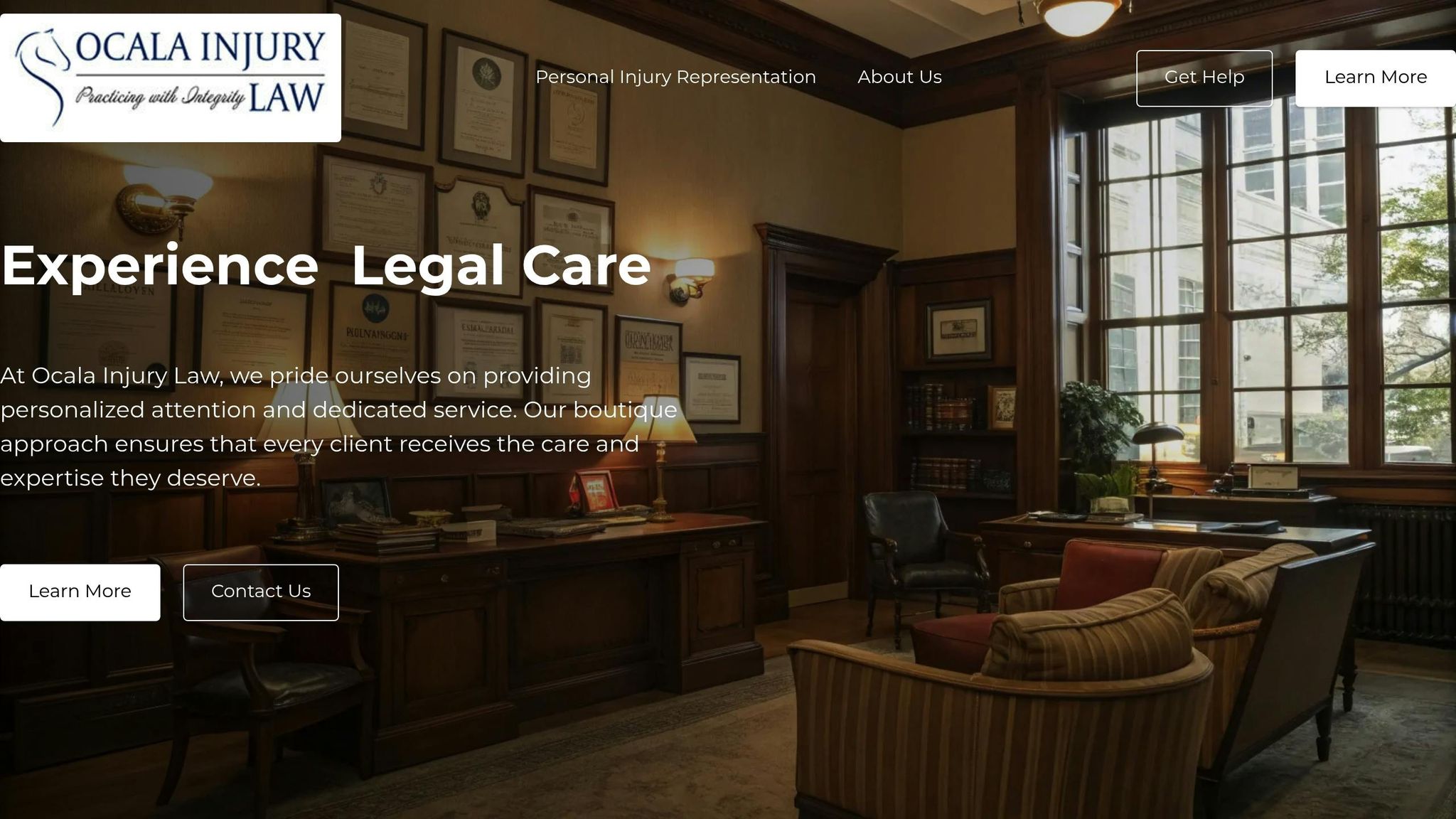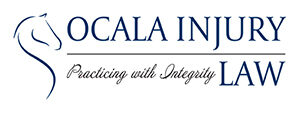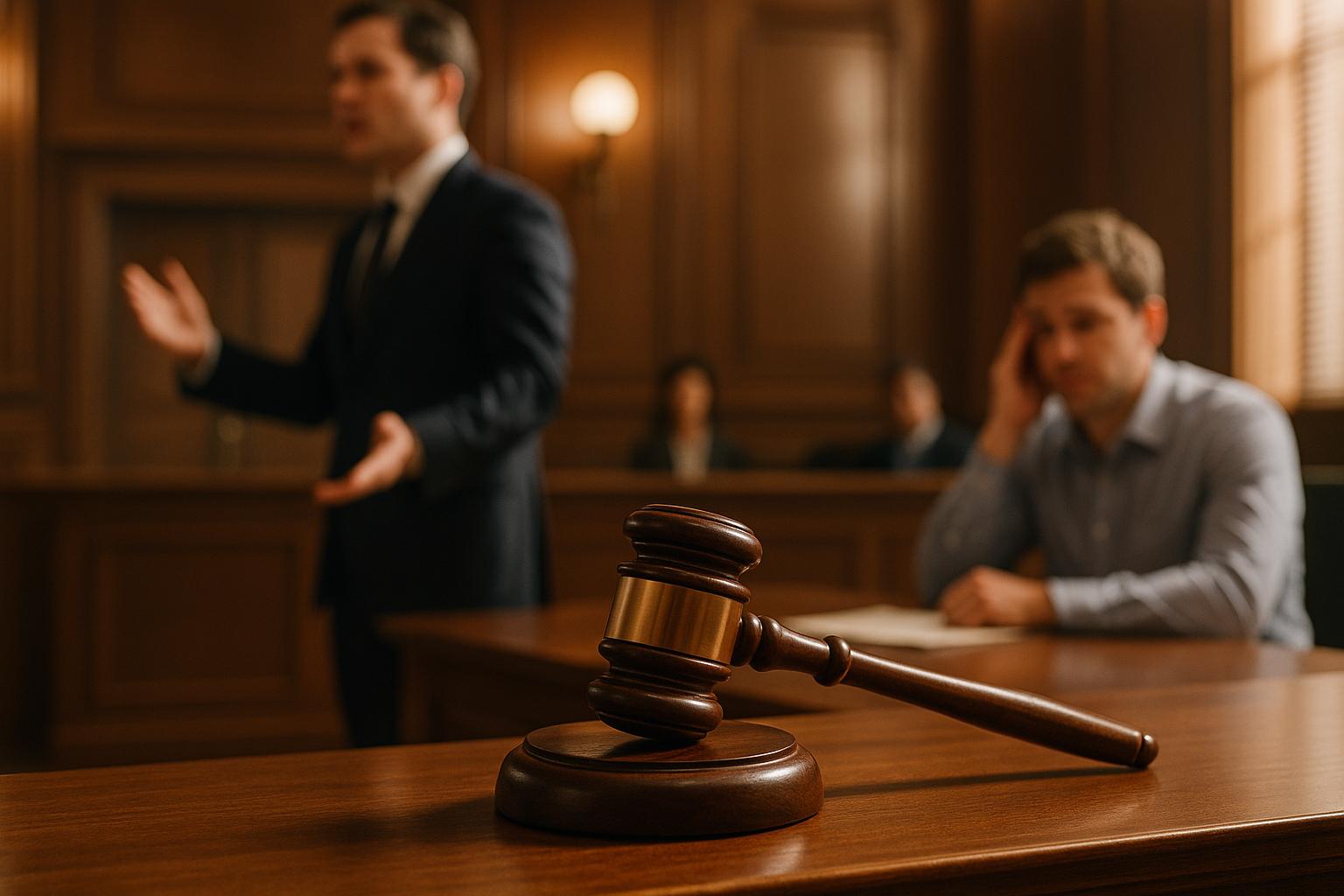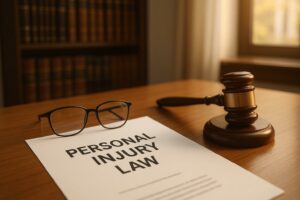A breach of duty occurs when someone fails to act with the care expected in a given situation, leading to harm. It’s a key element in proving negligence in personal injury cases. Here’s what you need to know:
- Definition: Failing to act as a reasonable person would under similar circumstances.
- Legal Standards: Courts use the "reasonable person" test and consider relationships, such as property owner–visitor or doctor–patient, to determine the expected duty of care.
- Evidence Needed: Video footage, incident reports, maintenance records, and expert testimony can help prove a breach.
- Types of Compensation: Plaintiffs may recover economic damages (medical bills, lost wages), non-economic damages (pain and suffering), and sometimes punitive damages for extreme negligence.
For example, if a store owner ignores a spill and someone is injured, this could be a breach of duty. Proving this requires solid evidence and a clear link between the breach and the injury.
Legal Standards for Breach of Duty
Courts use specific criteria to assess whether a breach of duty has occurred.
Reasonable Person Test
The "reasonable person" test evaluates if the defendant acted as a cautious individual would in the same situation. It considers factors like the likelihood of harm, the potential severity of injuries, and how simple it would have been to take precautions. For instance, a driver running a red light during rush hour would breach their duty because the risk of harm is high, and stopping at the light is a minimal effort.
"According to the National Center for State Courts, breach is established in approximately 62% of negligence cases that reach trial. However, success rates vary by case type – for example, medical malpractice claims have a 23% plaintiff win rate due to high evidentiary burdens (BMJ Study, 2023)."
Types of Duty of Care
Different relationships come with varying levels of responsibility, each having its own expected standard of care:
| Relationship Type | Standard of Care | Example of Breach |
|---|---|---|
| Property Owner–Visitor | Maintain safe premises | Ignoring repeated complaints about broken stairs |
| Medical Professional–Patient | Follow accepted medical protocols | Prescribing the wrong medication dosage |
| Driver–Other Road Users | Follow traffic laws and drive safely | Exceeding federal driving hour limits |
| Product Manufacturer–Consumer | Ensure product safety | Selling products with known defects |
Professionals, such as doctors, are held to the standards of their qualified peers. For example, in Smith v. Jones Hospital (2019), a surgeon was found to have breached their duty by failing to follow established surgical protocols.
Statutory duties also play a critical role. When a defendant breaks a law designed to prevent specific injuries, courts may automatically deem it negligence – this is called "negligence per se." In Doe v. Apartment Complex LLC (2021), a landlord’s failure to repair a broken handrail, in violation of housing codes, automatically established negligence when a tenant fell.
These legal standards help courts determine whether a defendant failed to fulfill their obligations. They also lay the groundwork for proving how that failure directly caused harm, influencing the outcome of cases.
Proving Breach of Duty
To prove a breach of duty, you need solid evidence showing that the defendant failed to meet the expected standard of care. The right evidence can clearly demonstrate this failure in court.
Key Evidence Types
Building a strong case requires gathering documentation that highlights the incident and shows unreasonable actions by the defendant. For instance, video surveillance can reveal hazards that were ignored.
Here are some critical evidence types that can strengthen breach of duty claims:
| Evidence Type | Purpose | Impact on Case Success |
|---|---|---|
| Video Surveillance | Captures the duration and presence of hazards | Boosts success rate by 52% [1] |
| Incident Reports | Establishes a timeline and proves hazard awareness | Essential for showing the defendant was informed |
| Expert Testimony | Assesses if actions deviated from industry norms | Strengthens claims with objective analysis |
| Maintenance Records | Reveals missed inspections or safety checks | Demonstrates recurring negligence |
"According to the National Safety Council, premises liability cases have a 52% success rate when plaintiffs provide video evidence or witness corroboration. Claims lacking such proof settle 23% less often."
This evidence not only meets legal standards but also forms the foundation of strong personal injury cases.
Real-World Example: Store Slip-and-Fall
A January 2025 case involving a Walmart in Florida illustrates how combining different evidence types can prove a breach of duty:
- Security footage documented an unmarked spill left unattended for over two hours.
- Store policy documents showed regular inspections were required but not followed.
- Witness statements confirmed employees were informed but failed to act.
- Maintenance records revealed missed safety checks over time.
These combined pieces of evidence led to a $1.2 million verdict. The court emphasized that Walmart failed to adhere to its own safety protocols.
Additionally, expert testimony plays a crucial role by defining industry standards. Violations of safety regulations, such as OSHA requirements or local codes, can further solidify claims. For example, neglecting slip-resistant flooring in wet areas might breach both OSHA workplace standards and ADA rules.
[1] National Safety Council
Common Legal Defenses
Defendants in breach of duty cases often rely on specific legal defenses to counter claims. Two common strategies include pointing to the plaintiff’s role in the incident and arguing that the plaintiff knowingly accepted the risks involved.
Plaintiff’s Own Negligence
Defendants may claim that the plaintiff’s own actions contributed to the injury. This is known as comparative negligence. If the plaintiff is found partially responsible, their compensation can be reduced in proportion to their level of fault.
Risk Acceptance
Another defense is the assumption of risk. This is used when the plaintiff voluntarily participates in activities that come with known dangers. Defendants argue that by choosing to engage in such activities, the plaintiff shares responsibility for any injuries. However, this argument weakens if the defendant’s negligence introduced unexpected hazards or if the risks weren’t properly disclosed. These defenses play a critical role in shaping case outcomes and determining potential compensation.
sbb-itb-68ed374
Impact on Case Results
Once a breach of duty is established, the next step is to evaluate how it influences case outcomes. A strong link between the breach and the injury is essential for securing compensation.
Connecting Breach to Injury
Courts rely on evidence like medical records and expert testimony to establish a clear connection between the breach and the injury, often referred to as causation. This connection can be demonstrated through:
- Medical records showing injuries occurred after the breach
- Expert testimony directly linking the breach to the claimed damages
- Evidence ruling out other potential causes of the injury
- Documentation tying the timing of the breach to the injury
This type of evidence strengthens the case and improves the likelihood of securing compensation.
Types of Compensation
When a breach of duty is proven, plaintiffs may qualify for different types of compensation. These typically fall into the following categories:
| Compensation Type | Description | Common Examples |
|---|---|---|
| Economic Damages | Financial losses that can be measured | Medical bills, lost wages, property damage |
| Non-Economic Damages | Personal impacts that are harder to quantify | Pain and suffering, emotional distress |
| Special Damages | Specific monetary losses tied to the case | Future medical care, loss of earning capacity |
| Punitive Damages | Awards meant to punish extreme negligence | Cases involving gross negligence |
The amount awarded depends on factors like the severity of the injury, recovery time, the strength of the evidence, and the ability to prove the breach caused the injury.
At Ocala Injury Law, we focus on personal injury cases and work tirelessly to help clients obtain the compensation they deserve. We provide free consultations to discuss your case and explore your legal options.
The stronger the evidence connecting the breach to the injury, the better the chances of a favorable outcome.
Conclusion
Key Takeaways
Understanding breach of duty is essential for successfully handling negligence claims. The "reasonable person" test serves as the legal benchmark, assessing whether a defendant acted with the expected level of care. Courts rely on evidence like incident reports, surveillance footage, and expert testimony to decide if a breach occurred. For instance, a Florida case demonstrated that documented hazards can strongly support claims of a breach.
Here are some critical factors in determining breach of duty:
| Factor | Legal Importance | Role in Cases |
|---|---|---|
| Industry Standards | Defines the baseline for care | Helps establish professional lapses |
| Statutory Requirements | Outlines legal duties | Highlights violations of the law |
| Foreseeability | Identifies predictable risks | Shows negligent behavior |
| Documentation | Builds a trail of evidence | Strengthens causation arguments |
These elements emphasize the importance of skilled legal representation in breach of duty cases.
Why Choose Ocala Injury Law?

Ocala Injury Law has achieved over $50 million in settlements related to breach of duty cases, with a success rate of 90%. In 2024, the firm secured a $1.2 million settlement for a client after proving that a grocery store ignored multiple complaints about a leaking freezer. This settlement covered medical expenses and lost wages.
The firm’s approach includes detailed evidence analysis and strategic case preparation. Ocala Injury Law offers free consultations and works on a contingency basis, meaning clients pay nothing upfront. With a 4.9/5 rating from over 200 reviews, the firm’s track record demonstrates dedication to achieving positive outcomes and ensuring client satisfaction.
FAQs
What is the ‘reasonable person’ standard in determining a breach of duty in negligence cases?
The ‘reasonable person’ standard is a legal benchmark used to determine if someone has breached their duty of care in a negligence case. It asks whether a hypothetical, reasonable person in the same situation would have acted differently to prevent harm. If the actions fall short of what a reasonable person would do, it may constitute a breach of duty.
For example, if a driver runs a red light and causes an accident, a reasonable person would likely have stopped at the light to avoid harm to others. This standard helps ensure accountability by evaluating behavior against common sense and societal expectations.
What evidence is most useful in proving a breach of duty in negligence cases, and how does it affect the outcome?
Proving a breach of duty in negligence cases often requires strong, clear evidence that demonstrates the defendant failed to meet the standard of care expected in the situation. The most effective types of evidence include:
- Witness testimony: Statements from individuals who observed the incident or can confirm the defendant’s actions (or lack thereof).
- Documentation or records: Photos, videos, medical reports, or written communications that show negligence or harm caused.
- Expert opinions: Testimony from professionals in relevant fields who can explain how the defendant’s actions deviated from accepted standards of care.
This evidence can significantly influence the outcome of a case by helping establish the defendant’s responsibility for the harm caused. If you’re pursuing a personal injury claim, consulting an experienced attorney can ensure the right evidence is collected and presented effectively to strengthen your case.
When can a defendant claim that the plaintiff’s own negligence played a role in their injury?
In some cases, a defendant may argue that the plaintiff’s own actions or negligence contributed to their injury. This is often referred to as comparative negligence or contributory negligence, depending on the laws of the state. For example, if a pedestrian was injured in a car accident but was jaywalking at the time, the defendant might claim that the pedestrian’s actions partially caused the incident.
The extent to which a plaintiff’s negligence affects their claim varies by state. In states following comparative negligence laws, the plaintiff’s compensation may be reduced based on their percentage of fault. However, in states with contributory negligence laws, even a small degree of fault on the plaintiff’s part could bar recovery entirely. If you have questions about how these laws apply to your case, consulting a personal injury attorney can provide clarity.




